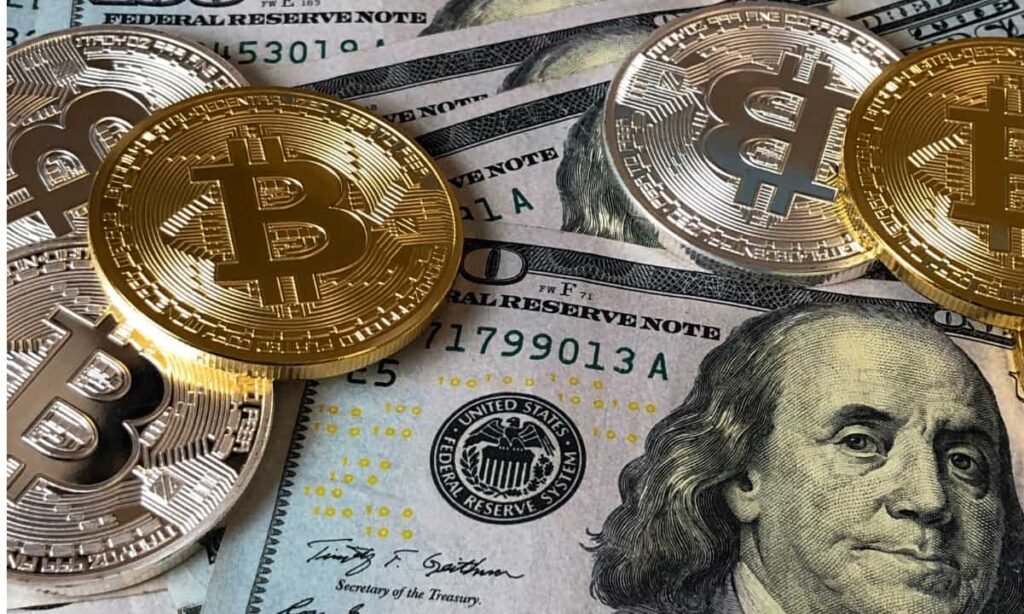Analysts are keenly watching money supply expansion as a key indicator for Bitcoin and crypto markets, with the notion that when central banks print more money, it eventually flows into high-risk assets such as crypto.
Bitcoin markets are lining up with the 100-day offset of the M2 money supply, observed crypto YouTuber Lark Davis on Monday.
He predicted a “parabolic move” that could propel the asset to $250,000 over the next few months. However, BTC is actually lagging behind the M2 supply growth at the moment, as it usually does on longer time frames.
Global M2 is hitting new ATHs.
Bitcoin is lining up with the 100-day offset of the M2 money supply.
Are you ready for Bitcoin’s parabolic move? pic.twitter.com/p3StVu9yx1
— Lark Davis (@TheCryptoLark) July 7, 2025
Good News For Bitcoin?
The US money supply is “re-surging,” observed Global Markets Investor on Tuesday. They noted that the M2 money supply in America jumped 4.5% year-over-year in May to a record $21.94 trillion.
It has likely exceeded $22 trillion in July as money printing has continued, and if the trend is projected over the next decade, the M2 money supply will double.
⚠️US money supply is re-surging:
US M2 money supply jumped 4.5% year-over-year in May, to a record $21.94 TRILLION.
This has now surpassed the March 2022 record of $21.86 trillion
For perspective, the 2000-2025 annual growth rate has been 6.3%.https://t.co/FWsgYrccuy
— Global Markets Investor (@GlobalMktObserv) July 8, 2025
The US money supply has grown rapidly, surging around 37% over the past five years since March 2020, when the money printers were ramped up to keep the economy afloat during the pandemic.
Moreover, global money supply is at a record high of $93.7 trillion and growing 7.45% annually. This global figure combines the four major central banks: the Federal Reserve (Fed), the European Central Bank (ECB), the Bank of Japan (BOJ), and the People’s Bank of China (PBOC).
“As global money supply expands, Bitcoin’s next target sits around $170,000, following the flow,” said analyst Crypto Auris last week.
Analysts had predicted a strong week for Bitcoin if the outcome of Trump’s tariff deadline was positive.
However, the US president has issued letters to countries primarily in Asia that had yet to make a deal, including Japan, Korea, Thailand, and Indonesia, causing crypto markets to retreat on Tuesday.
Debunking the Correlation Theory
On July 7, Protos debunked the correlation between M2 money and Bitcoin prices, stating that the relationship falls apart when you simply change the time frame on the charts.
When zoomed from 2021 to the present, the correlation looks strong; however, when zoomed from 2019 to the present, M2 rises two years before Bitcoin. M2 even hit new highs in November 2022, while Bitcoin crashed during the FTX collapse.
Total money supply doesn’t measure liquidity available for Bitcoin purchases and correlates with the price of everything since it’s the denominator in all prices, they stated.
️ BITCOIN-M2 CORRELATION DEBUNKED
Technical analysts are convinced $BTC strongly correlates with M2 money supply.
Charts look compelling until you change one simple setting: the zoom.
What looks like perfect correlation from 2021 falls apart when you zoom out to 2019 pic.twitter.com/HHBGytd8lz
— Protos (@Protos) July 7, 2025
Read the full article here
